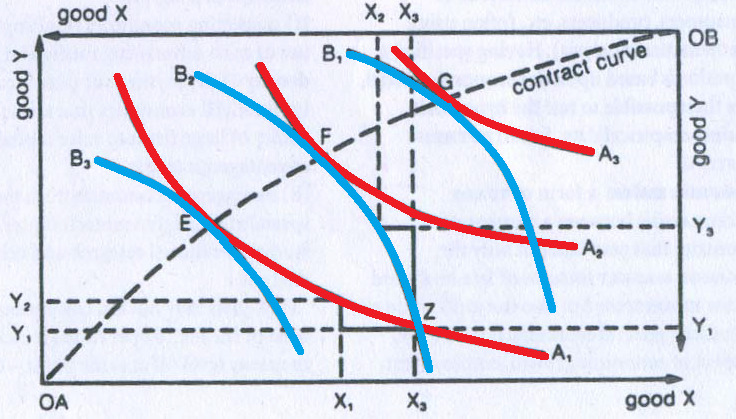Why do people use resources like the environment? This is because, pollution is a byproduct of activities that add to their welfare. These activities bring economic gain to producers and utility gain to consumers. We do not pollute the planet just for fun; we do it as part of activities that improve our welfare. The economists view of environmental pollution is that pollution creates another trade-off of cost and benefit that must be weighed on a case by case basis. Many of our streams and lakes have historically served as depositories of chemical waste generated by industrial plants and mines. Some are cleaner now, but many still suffer damage form earlier discharges of chemicals, like PCBs whose “half-lives” are measured in hundreds of years. Many pesticides, fertilizers, and detergents used by farms and homes find their way into our lakes and waterways, where they have damaged commercial and recreational fishing. Continue reading
Managerial Economics
Managerial Economics generally refers to the integration of economic theory with business practice. It deals with the use of economic concepts and principles of business decision making. Managerial Economics is thus constituted of that part of economic knowledge or economic theories which is used as a tool of analyzing business problems for rational business decisions. Managerial economics can be viewed by most modern economists as a practical application of economics theory in using effectively the firms scarce resources.
Poverty Trap
Poverty trap is a situation where an unemployed person receiving social security benefits not encouraged to seek work because his or her after €tax earnings potential in work is less than the benefits currently obtained by not working. The poverty trap occurs due to benefits such as income support, housing benefit, single parent allowance and family tax credit. Given that social security benefits represent the ‘bottom line’ (that is, the provision of some socially and politically ‘acceptable’ minimum standard of living), the problem is how to reconcile this with the ‘work ethic’. For example, consider the case of a low-skilled person in the UK. He is unable to get a high-paid job because he doesn’t have the right skills, training or experience. He has two options. First one is to get a low-paid job or second option is to claim unemployment benefits. If he gets a low paid job he Continue reading
The Edgeworth Box
In 1881, Francis Y. Edgeworth came up with a way of representing, using the same axis, indifference curves and the corresponding contract curve in his book “Mathematical Psychics: an Essay on the Application of Mathematics to the Moral Sciences”. It was Vilfredo Pareto, in his book “Manual of Political Economy”, 1906, who developed Edgeworth’s ideas into a more understandable and simpler diagram, which today we call the Edgeworth box. Edgeworth box a conceptual device for analyzing possible trading relationships between two individuals or countries, using indifference curves. It is constructed by taking the indifference map of one individual (B) for two goods (X and Y) and inverting it to face the indifference map of second individual (A) for the same two goods. Thus, Edgeworth box is a traditional visualization of the benefits potentially available from international trade. Individual A’s preferences are depicted the three indifference curves A1, A2 and corresponding Continue reading
Government Policy Instruments for Managing Foreign Direct Investment (FDI)
By their choice of policies, home countries can both encourage and restrict FDI by local firms. We look at policies designed to encourage outward FDI first. These include foreign risk insurance, tax incentives, and political pressure. Then we will look at policies designed to restrict outward FDI. Home Country Policies to Encourage Outward FDI Many investor nations now have government backed insurance programs to cover major types of foreign investment risks. The types of risks insurable through these programs include risks of expropriation (nationalization), war losses and the inability to transfer profit back home. Such programs are particularly useful in encouraging firms to undertake investments in politically unstable countries. Home Country Policies to Restrict Outward FDI Virtually all investor countries, including the US, have tried to exercise some control over outward FDI from time to time. One common policy has been to limit capital outflows out of certain concern for Continue reading
Analysis of Joseph Schumpeter’s ‘Theories of Economic Development’
At the turn of the century, a period of strengthening the role of monopolies, increasing property differentiation of the population and the deepening of cyclical crises appeared the concept of an Austrian economist and sociologist Joseph Schumpeter. Joseph Schumpeter was an economist and sociologist, he came into the history of economic science as a profound scholar of theoretical problems of entrepreneurship and evolution of socio-economic systems, as the historian of economic theory. His broad vision of the evolution of socio-economic processes still has influence on modern economic thought. He presented his understanding of the subject of economics and tried to combine economic theory, economic sociology and the history of economic analysis. He tried to create a coherent system of believes that explains new phenomena and processes. According to his theoretical views, J. Schumpeter does not belong to any known economic schools. He was involved in many issues, focusing on the Continue reading
Cashless Economy – The Road Towards a Cashless World
A cashless economy is a system where payments are made by electronic means rather than using cash or check to pay for goods or services. In an economy that is “cashless”, a person would pay with plastic methods like credit cards, debit cards, or smart cards. This type of transaction electronically moves money from one account to another rather than using the traditional forms of exchanging printed currency or checks. Woodfords Model of Cashless Economy There has been much debate over Woodford’s model of a cashless economy by many experts in the field of economics. Most experts believe that although some of the ideas brought forth make sense, the model is still incomplete because, in real-world economics, central banks can affect nominal interest rates. In Woodford’s model, he assumes that this does not relate to the real-world economy. Woodford’s argument is that banks have committed themselves to straightforward objectives to Continue reading



